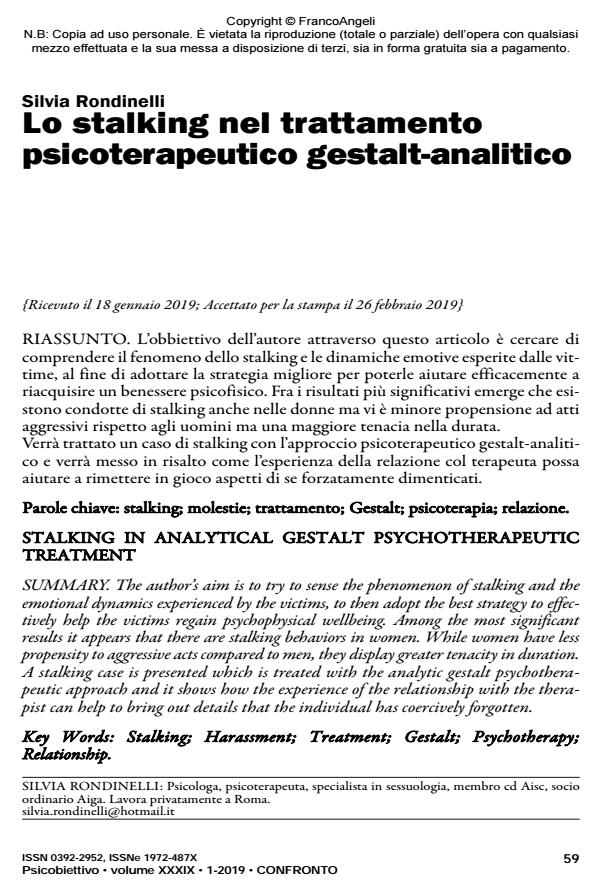Stalking in analytical gestalt psychotherapeutic treatment
Journal title PSICOBIETTIVO
Author/s Silvia Rondinelli
Publishing Year 2019 Issue 2019/1
Language Italian Pages 17 P. 59-75 File size 156 KB
DOI 10.3280/PSOB2019-001006
DOI is like a bar code for intellectual property: to have more infomation
click here
Below, you can see the article first page
If you want to buy this article in PDF format, you can do it, following the instructions to buy download credits

FrancoAngeli is member of Publishers International Linking Association, Inc (PILA), a not-for-profit association which run the CrossRef service enabling links to and from online scholarly content.
The author’s aim is to try to sense the phenomenon of stalking and the emotional dynamics experienced by the victims, to then adopt the best strategy to effectively help the victims regain psychophysical wellbeing. Among the most significant results it appears that there are stalking behaviors in women. While women have less propensity to aggressive acts compared to men, they display greater tenacity in duration. A stalking case is presented which is treated with the analytic gestalt psychotherapeutic approach and it shows how the experience of the relationship with the therapist can help to bring out details that the individual has coercively forgotten.
Keywords: Stalking; Harassment; Treatment; Gestalt; Psychotherapy; Relationship.
Silvia Rondinelli, Lo stalking nel trattamento psicoterapeutico gestalt-analitico in "PSICOBIETTIVO" 1/2019, pp 59-75, DOI: 10.3280/PSOB2019-001006